Anthony Bourdain heads to West Africa to explore the rich history of Ghana. The old Ghana, a land of forts, colonialism and slavery, is a strong contrast to the modern-era Ghana, a culture filled with welcoming people and interesting food and music.
Introduction:
Ghana
The word Ghana means "Warrior King' and is derived from the ancient Ghana Empire. Ghana was inhabited in pre-colonial times by a number of ancient predominantly Akan kingdoms, including the inland Ashanti Empire, the Akwamu on the eastern coast, and various Fante and non-Akan states, like the Ga and Ewe, along the coast and inland.
Ghana was the first place in sub-Saharan Africa where Europeans arrived to trade after contact with the Portuguese in the 15th century—first in gold, later in slaves. The British established the Gold Coast Crown colony in 1874 over parts but not all of the country. Ghana was also the first black African nation in the region to achieve independence from a colonial power in 1957, in this instance Britain, under the leadership of Kwame Nkrumah, who later became first prime minister and then president of the modern Ghanaian state.
Ghana's chose for itself a new flag which consists of the colors red, gold, green and the black star. Designed by Theodosia Salome Okoh, the red represents the blood that was shed towards independence, the gold represents the mineral wealth of Ghana, the green symbolizes the rich agriculture and the black star is the symbol of African emancipation.
As an anti-colonial leader, President Kwame Nkrumah sought a united Africa which would not drift into neo-colonialism. He was the first African head of state to promote Pan-Africanism, an idea he came into contact with during his studies at Lincoln University in Pennsylvania (United States), at the time when Marcus Garvey was becoming famous for his "Back to Africa Movement." He merged the teachings of Garvey and the African-American scholar W. E. B. Du Bois into the formation of the modern day Ghana. Ghana's principles of freedom and justice, equity and free education for all, irrespective of ethnic background, religion or creed, borrow from Nkrumah's implementation of Pan-Africanism.
Although his goal of African unity never realized, Osagyefo Dr. Kwame Nkrumah, as he is now known, played an instrumental part in the founding of the Organisation of African Unity, which was succeeded in 2002 by the African Union. His achievements were recognised by Ghanaians during his centenary birthday celebrations, and the day was instituted as a public holiday in Ghana.
Economy:
A well-administered country by regional standards, Ghana is stable and prosperous, and is often seen as a model for political and economic reform in Africa. Ghana is the second largest producer of cocoa in the world. The economy of Ghana has been listed as The World's Fastest Growing Economy in 2011 in an economic research led by Economy Watch. With an economic growth of about 20% for the year 2011, Ghana growth rate stands ahead of the rest of the world in economic growth and ahead of the next eleven fastest growing economies in the world by 2011.
Demographics:
Ghana has a population of about 24 million people. It is home to more than 100 different ethnic groups. Ghana has not seen the kind of ethnic conflict that has created civil wars in many other African countries. The official language is English; however, most Ghanaians also speak at least one local language.
The ethnic groups in Ghana are the Akan (which includes the Fante, Akyem, Ashanti, Kwahu, Akuapem, Nzema, Bono, Akwamu, Ahanta and others) 49.3%, Mole-Dagbon 15.2%, Ewe 11.7%, Ga–Dangme (comprising the Ga, Adangbe, Ada, Krobo and others) 7.3%, Guan 4%, Gurma 3.6%, Gurunsi 2.6%, Mande-Busanga 1%, other tribes 1.4%, other (Hausa, Zabarema, Fulani and Others) 1.8% (2000 census).
According to the CIA World Factbook, religious divisions are as follows: Christian 68.8%, Muslim 15.9%, Traditional African beliefs 8.5%.
Culture:
In general, Ghanaians emphasize communal values such as family, respect for the elderly, honoring traditional rulers, and the importance of dignity and proper social conduct. Individual conduct is seen as having impact on an entire family, social group and community; therefore, everyone is expected to be respectful, dignified and observant in public settings and in most every aspect of life. Naming ceremonies, puberty initiations, marriage and death are all marked by family ceremonies, and while Ghana has the highest percentage of Christians in West Africa, belief in traditional animist religions is still common. Seasonal festivals serve to bring a whole tribe or clan together in spectacular fashion.
Customs are often passed on through the extended family. The customary leaders or chiefs are given historical authority over social, family, and land-related matters. Relationships within traditional society are based on family membership, inherited status, and ancestral beliefs. In modern society, relationships are determined by achieved status, formalized education, membership in professional associations, and ethnic affiliation. The result is that, even those who live primarily in the modern urban setting remain bound to traditional society through the kinship system and are held to the responsibilities that such associations entail.
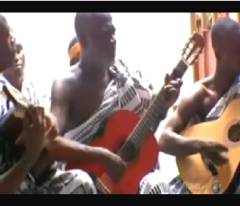 There are three distinct types of Ghanaian music: ethnic or traditional music, normally played during festivals and at funerals; "highlife" music, which is a blend of traditional and ‘imported’ music; and choral music, which is performed in concert halls, churches, schools and colleges. Highlife is a musical genre that originated in Ghana in the 1900s and spread to Sierra Leone, Nigeria and other West African countries by 1920. Highlife is characterized by jazzy horns and multiple guitars which lead the band. Recently it has acquired an uptempo, synth-driven sound.
There are three distinct types of Ghanaian music: ethnic or traditional music, normally played during festivals and at funerals; "highlife" music, which is a blend of traditional and ‘imported’ music; and choral music, which is performed in concert halls, churches, schools and colleges. Highlife is a musical genre that originated in Ghana in the 1900s and spread to Sierra Leone, Nigeria and other West African countries by 1920. Highlife is characterized by jazzy horns and multiple guitars which lead the band. Recently it has acquired an uptempo, synth-driven sound.
Ghanaian dance is as diverse as its music. Each ethnic group has their own traditional dances and there are different dances for different occasions. There are dances for funerals, celebrations, storytelling, praise and worship etc.
Ghanaian cuisine has diverse traditional dishes from each ethnic group, tribe and clan from the north to the south and from the east to west. Generally, most Ghanaian food are made up of a starchy portion (rice, fufu, kenkey, etc) and a sauce or soup saturated with fish, snails, meat or mushrooms. Ghanaian food is quite sophisticated with liberal and adventurous use of exotic ingredients and a wide variety of flavors, spices and textures.
Tourism:
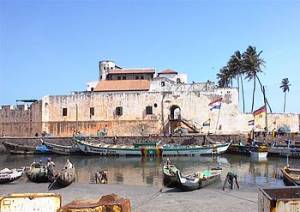 In 2005, 446,000 tourists visited Ghana. A fourth of the number were of African descent from the Diaspora. In 2011, Forbes Magazine, published that Ghana was ranked the eleventh most friendly country in the world. The assertion was based on a survey in 2010 of a cross-section of travelers. Of all the African countries that were included in the survey Ghana ranked highest. Tourism is the fourth highest earner of foreign exchange for the country.
In 2005, 446,000 tourists visited Ghana. A fourth of the number were of African descent from the Diaspora. In 2011, Forbes Magazine, published that Ghana was ranked the eleventh most friendly country in the world. The assertion was based on a survey in 2010 of a cross-section of travelers. Of all the African countries that were included in the survey Ghana ranked highest. Tourism is the fourth highest earner of foreign exchange for the country.
Major tourist sites include: Kakum National park (which features a long series of hanging bridges at the forest canopy level known as the "Canopy Walkway" that are serve as an ecotourism attraction), Mole National park (Ghana's largest wildlife refuge and elephant sanctuary), Ankasa Conservation Area (a tropical rainforest and wetlands known for its river rapids and waterfalls), Manhyia Palace Museum, and Cape Coast Castle and Elmina Castle (both recognized by UNESCO as World Heritage Sites). Cape Coast Castle was visited by the US President Barack Obama and Mrs. Michelle Obama and family on July 11, 2009.
Accra
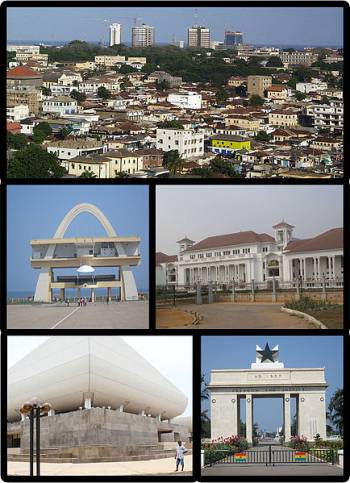 Accra is the capital and largest city in Ghana with an estimated population of 3.9 million as of 2011. The city was first settled in the 15th century by the Ga people. By the 17th century, the Portuguese, followed by the Swedish, Dutch, French, British and Danish, had constructed forts in the town. Accra then served as a center for the slave trade with the Europeans. Such activity went on in Accra until the abolition of the slave trade in 1807.
Accra is the capital and largest city in Ghana with an estimated population of 3.9 million as of 2011. The city was first settled in the 15th century by the Ga people. By the 17th century, the Portuguese, followed by the Swedish, Dutch, French, British and Danish, had constructed forts in the town. Accra then served as a center for the slave trade with the Europeans. Such activity went on in Accra until the abolition of the slave trade in 1807.
The British captured Accra in 1874, and in 1877, at the end of the second Anglo-Ashanti War, Accra became the capital of the British Gold Coast colony. The Gold Coast achieved independence from the United Kingdom in 1957. The name Ghana was chosen for the new nation to reflect the ancient Empire of Ghana, which once extended throughout much of west Africa.
Today, Accra is the administrative, communications, cultural and economic centre of the country. Originally built around a port, Accra stretches along the Atlantic Coast and north into the interior. Its architecture ranges from large and elegant nineteenth century colonial buildings to skyscrapers and apartment blocks made of concrete, glass and steel.
Spreading along the Atlantic coast, the city is a tourist hub, sporting a wide range of nightclubs, restaurants and hotels. Accra also features a range of absorbing museums and fine public monuments, modern business and commercial areas, as well as busy markets and tree-lined residential suburbs.
Kumasi
Kumasi a city in southern central Ghana's Ashanti region. With a population of 1.5 million, Kumasi is the second-largest city in the country. Ashanti are the major ethnic group of Ashanti Region in Ghana. They are an Akan people. The city's most famous son, an Ashanti, is the former Secretary-General of the United Nations, Kofi Annan.
It is popularly known as "The Garden City" or "heart beat" of Ghana because of its many beautiful species of flowers and plants. Due to large gold deposits that have been mined in the area, Kumasi has been among the wealthier cities in Ghana. The city's major exports are hardwood and cocoa. Kumasi has 50% of the timber industry in Ghana, with more than 4,000 employed in the business.
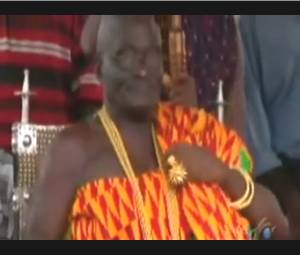 Prior to European colonization, the Ashanti people developed a large and influential empire in West Africa. Today Ashanti number close to 7 million people (roughly 19% of the Ghanaian population.)
Prior to European colonization, the Ashanti people developed a large and influential empire in West Africa. Today Ashanti number close to 7 million people (roughly 19% of the Ghanaian population.)
The Ashanti were one of the few African states able to offer serious resistance to European colonizers, mainly the British. They were described as a fierce organized people whose king "can bring 200,000 men into the field and whose warriors are evidently not cowed by Snider rifles and 7-pounder guns".
Between 1823 and 1896, Britain fought four wars against the Ashanti kings (the Anglo-Ashanti Wars). In 1900, the British finally defeated the kingdom and incorporated it into the Gold Coast colony as a protectorate. Relations improved, however, and in 1926 the Asantehene was given ceremonial control over Kumasi. In 1935 the full role of leader of the Ashanti people was restored.
The British touted the Ashanti as one of the more civilized African peoples, cataloguing their religious, familial, and legal systems in works like R.S. Rattray's Ashanti Law and Constitution. Their political power has fluctuated since Ghana's independence, but they remain largely influential.
Episode Recap:
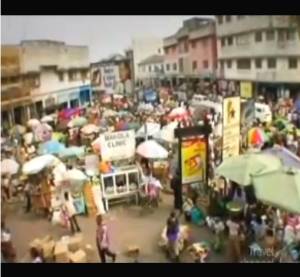 Anthony Bourdain begins his Sub-Saharan food expedition in the Ghanaian capital of Accra striking out on his own.
Anthony Bourdain begins his Sub-Saharan food expedition in the Ghanaian capital of Accra striking out on his own.
Makola Market: Anthony tours Makola Market, a renowned market place and shopping district in the center of Accra. Primarily dominated by women traders, Makola Market sells fresh produce, manufactured and imported foods, clothes, shoes, tools, medicines, and cookingware. Anthony samples various exotic fruits, vegetables, and fried treats. He enjoys a condensed milk-toffee drink made with local herbs, and palm wine made from the sap of various species of palm tree and coconut palms.
Asanka Local Chop Bar: Anthony visits Asanka Local, one of the ubiquitous chop bars, with a couple of local guides he picked up. Anthony chows down on a stew made with beef, crab, eggs, and lamb meat, a palm-nut soup and groundnut soup mixed together with goat meat, and some cow tongue—enough food for the whole day.
A chop bar is a local restaurant that brings Ghanaian cuisine, drink, music and dance together under one roof. Basic meals in Ghana often consist of a soup or stew with peanut or spicy palm oil and meat or fish, with a bowl of starch, such as omo tuo, which is made of pounded rice that you use to pick up the meat and sop up stews.
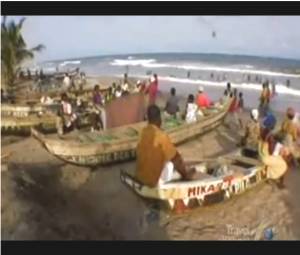 Fishing Village in Jamestown: Anthony meets up with Jacob Otanka Obetsebi-Lamptey, aka "Minister Jake", the former minister of tourism for some seafood on the beach in Jamestown. After partaking in a fish haul they enjoy a seafood bonanza consisting of kenkey (ground maize, usually served with a soup, stew or sauce), lobster, red snapper, shrimp, squid, and cassava fish. Anthony tries barracuda for the first time and is surprised how good it is.
Fishing Village in Jamestown: Anthony meets up with Jacob Otanka Obetsebi-Lamptey, aka "Minister Jake", the former minister of tourism for some seafood on the beach in Jamestown. After partaking in a fish haul they enjoy a seafood bonanza consisting of kenkey (ground maize, usually served with a soup, stew or sauce), lobster, red snapper, shrimp, squid, and cassava fish. Anthony tries barracuda for the first time and is surprised how good it is.
Osu Night Market: Anthony visits Auntie Grace at the famed Osu Night Market located in Osu, a district in central Accra, known for its busy commercial, restaurant and nightlife activity. It is locally known as the "West End" of Accra. Auntie Grace is the undisputed "queen of the market" and explains how the market caters to the late night workers and party goers. Anthony dines on an assortment of lip-smacking, finger-licking street food, including a local delicacy of spinach, pork belly, rice and beans with spaghetti noodles.
Elephant Sanctuary: Anthony visits the elephant sanctuary at Ghana's Mole National Park. Established as Ghana's largest wildlife refuge in 1958, Mole National Park is on grassland savanna and is home to a resident population of 800 elephants. Anthony comically describes how ignorant and utterly unprepared he and the crew are to meet and interact with the elephants.
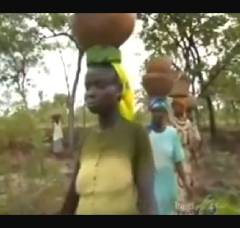 African Village: Anthony visits the village of the game warden and guide Zack who introduces Anthony to his aunties and step moms. Anthony watches as they harvest shea nuts which, aside from it's edible fruit, are used in a host of expensive cosmetic products, including shea butter. He also observes the women as they pound cassava, which is the a main food staple in the Ghanaian diet, and is used to make a number of traditiional African dishes, including tua zafe (aka "T.Z.")—a thick paste similar to fufu. Later he sits down to a traditional meal with some of the village leaders.
African Village: Anthony visits the village of the game warden and guide Zack who introduces Anthony to his aunties and step moms. Anthony watches as they harvest shea nuts which, aside from it's edible fruit, are used in a host of expensive cosmetic products, including shea butter. He also observes the women as they pound cassava, which is the a main food staple in the Ghanaian diet, and is used to make a number of traditiional African dishes, including tua zafe (aka "T.Z.")—a thick paste similar to fufu. Later he sits down to a traditional meal with some of the village leaders.
Nzulezo River Village: Anthony heads down river by boat to visit the river village of Nzulezo in the western region of Ghana. Built over Lake Tadane, the settlement of Nzulezo (meaning "surface of water") consists of stilt-supported structures integrated seamlessly with the water-dominated natural landscape. Anthony meets the local tribal leaders, and after much after much ceremony, the village honors Anthony with a festive banquet of palm wine, cassava fish, and a spicy hot fish soup. Afterwards, some villagers invite Anthony to join them for a stiff drink of akpeteshie, the local version of Ghanian moonshine.
Home of Koo Nimo: Anthony travels to Kumasi to visit the home of the legendary Koo Nimo. Koo Nimo is the acknowledged master and elder statesman of the palm-wine guitar and highlife, another of Ghana's musical genres. Palm-wine music combines storytelling, proverbs, humorous observation, and social commentary to a lilting guitar-based rhythm. After listening Koo Nimo perform, the two share a gourd of palm wine and a traditional West African dinner of red plantains and grass-cutter soup made from the meat of a greater cane rat (a local bush animal that is also raised in cages). The greater cane rat is considered to be a regional delicacy.
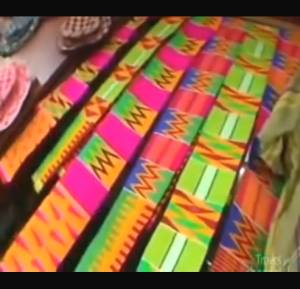 Textile Factory: Anthony visits a local textile factory that weaves traditional kente cloth. He's fascinated with the skill and speed of the workers as the weave the intricate designs.
Textile Factory: Anthony visits a local textile factory that weaves traditional kente cloth. He's fascinated with the skill and speed of the workers as the weave the intricate designs.
Kente cloth is a type of silk and cotton fabric made of interwoven cloth strips and is native to the Akan people of Ghana and the Ivory Coast. The patterns are not just decorative. The names and meanings of kente designs are specific to gender, social status, historical events, and proverbs.
Some kente is considered to be a royal and sacred cloth worn only in times of extreme importance. Originally, kente was the cloth of kings. Over time, the use of kente became more widespread and popular in the modern era when Kwame Nkrumah, Ghana's first president, proudly wore kente cloth on his first state visit to the USA in 1958. However, its importance has remained and it is held in high esteem in the Akan family and the entire country of Ghana.
Palm Wine Distillery: Some villagers show Anthony their homemade distillery and reveal the ancient fermentation process to making good palm wine, which turns out to be a fraternal experience. Afterwards they pass a gourd of palm wine amongst them. Then it's on to making akpeteshie, which is distilled in much the same process as that of moonshine; the final result being a beverage with an alcohol content of 95-98%.
Ashanti Reception: After an elaborate welcoming reception for Anthony by the Ashanti king and tribal leaders of Kumasi—a ceremony fit for a statesman—the king presents Anthony with a gift of kente cloth. Truly honored by the generous gesture, Anthony vows to keep as a treasure.
Anthony concludes his first trip to Sub-Sahara Africa with an admission that prior to this trip, despite the fact that much of what culturally defines us as Americans—our music, the flavors we take for granted, faces of our African American people, etc.—he, like most Americans, had spent a lifetime of dimly being aware of but never really looking at the continent where civilization began.
Episodes:
 |
ARGENTINA: From the Tango to paragliding to cattle rustling to trekking along icy glaciers, Anthony experiences it all. |
 |
AUSTRALIA: Melbourne has been described as San Francisco without the fog. Anthony is off to discover what makes it so special. |
 |
BERLIN: Anthony finds himself in Berlin, a city that is for him both good and evil, Eastern and Western, repulsive and appealing. |
 |
BRAZIL: Some say São Paulo feels like LA threw up on NYC. But Anthony's back for the great food and its welcoming people. |
 |
CALCUTTA & BOMBAY: Anthony revisits his love for India's vibrant culture, cuisine & communities with a trip to Kolkata & Mumbai. |
 |
COLOMBIA: A bright and beautiful country that has gone from drug capital to food capital. Anthony explores its unique cuisine. |
 |
EGYPT: Anthony skips the long lines and tour buses, and visits with Egyptian locals to get a taste for what it means to be Egyptian. |
 |
GREEK ISLES: Anthony is on a culinary odyssey to discover if Greece really does have the world's healthiest diet. |
 |
HONG KONG: A wonder-land of colors, lights and speed, a perfect marriage of modern and traditional, and home to great Asian cuisine. |
 |
IRELAND: Ireland's steeped in history and traditions, both oral & written. Anthony dispels the myths that it has the worst food on the planet. |
 |
JAMAICA: Jamaica is a vibrant, colorful land full of resorts and reggae music. Anthony is there to uncover the lesser-known Jamaica. |
 |
KOREA: Anthony gives in to his employee's pressure to visit Korea and, next thing you know, they're in Seoul and the adventure begins. |
 |
MEXICO: Carlos, a head chef in NYC and good friend, gives Anthony a culinary tour of his hometown Puebla and nearby Mexico City. |
 |
OSAKA (Japan): Anthony learns all about kuidaore, which means to bankrupt oneself with extravagance in food and drink! |
 |
PARIS: In this very first episode of the series, Anthony heads to the "City of Light" to show, at least the Americans, why the French don't suck. |
 |
PERU: Anthony is on a mission to obtain personal enlightenment in a land of ancient culture, rich cuisine, and vibrant people. |
 |
QUEBEC (Canada): Anthony is off to Québec to indulge in one of his most hedonistic pleasures–foie gras (fatty duck liver). |
 |
RAJASTHAN (India): From gorgeous sights to enticing smells, Anthony explores the magical and delicious offerings of Rajasthan. |
 |
ROME: Anthony adopts the mindset of the Roman people–living a simple life and eating fresh, seasonal ingredients. |
 |
RUSSIA: Anthony explores Russia, where the food is hearty. Along the way he meets a former Cold War spy and Miss Russia. |
 |
SHANGHAI (China): Anthony is back in China. From Shanghai to Tibet, he searches for the mythical Shangri-La. |
 |
SICILY: Anthony starts his gastronomic tour through Sicily in style by sharing a spleen sandwich with Sicily's president. |
 |
SINGAPORE: Singapore is serious about food and offers up a cuisine like no other. Anthony dives in head-first. |
 |
SPAIN: According to Anthony, outside of Asia, Spain is the single greatest place for culinary achievement in the world. |
 |
TOKYO: Anthony is off to Tokyo in search of the relationship between a perfect piece of sushi and a perfect knife blade. |
 |
TUSCANY: Anthony travels to the beautiful Tuscan countryside to visit with friends and enjoy some homemade pasta that's out of this world. |
 |
URUGUAY: Anthony and his brother are on a mission to connect with their roots in Uruguay after learning that Bourdains once settled here. |
 |
VANCOUVER (Canada): Anthony visits Vancouver, home to a thriving film industry, gorgeous scenery, and an evolving food scene. |
Contact Us | Shop | Sitemap | Join Our Team | Investors | Advertise | Web Design Services
Community | Foodies' Choice | Meetup Groups | Chat | Blogs | Forums | Submit Your Site | Resources

